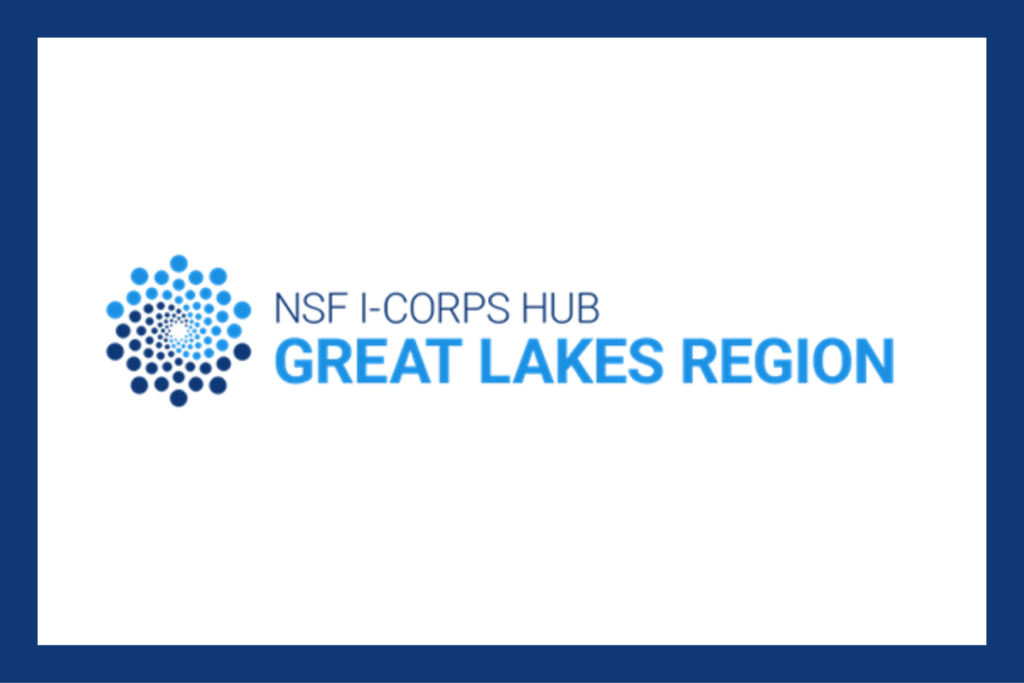
Exciting News for I-Corps™ Site: UWM is part of $15M Great Lakes Innovation Hub
To nurture a regional innovation ecosystem and move more discoveries from the research lab to the real world, the National Science Foundation has established a Great Lakes Region Innovation Corps Hub (I-Corps™ Hub) and the University of Wisconsin-Milwaukee (UWM) plays a key role.
The 11-university Hub is led by the University of Michigan (U-M), and it’s one of five Hubs across the country that NSF announced today as it continues to evolve the
I-Corps™ program. Launched in 2011, I-Corps™ trains scientists and engineers to carry their promising ideas and technologies beyond the university and into the marketplace to benefit society.
In addition to UWM and University of Michigan, the Great Lakes Region Hub includes Purdue University, the University of Illinois Urbana-Champaign, the University of Minnesota, Iowa State University, Michigan Technological University, Missouri University of Science and Technology, the University of Akron, the University of Chicago, and the University of Toledo.
“The Great Lakes region is home to many of the world’s leading research institutions, and many of our nation’s critical industries. Our goal with this I-Corps™ Hub is to leverage this intellectual depth to create a lasting economic impact on the region,” said Alec D. Gallimore, the Robert J. Vlasic Dean of Engineering, the Richard F. and Eleanor A. Towner Professor, an Arthur F. Thurnau Professor, and a professor of aerospace engineering.
“We’ll do this by creating new businesses, by keeping our existing companies globally competitive and on the leading edge of technology, and by developing talent that not only has technical and cultural expertise, but also an entrepreneurial mindset.”
The impact of I-Corps™
Over the past six years, NSF I-Corps™ Site of Southeastern Wisconsin led by Dr. Ilya Avdeev (CEAS/LEC) trained 660 researchers and students from 175 entrepreneurial teams coming from UWM, Marquette University, Milwaukee School of Engineering, Concordia University of Wisconsin, Medical College of Wisconsin and a few other universities. These teams formed 35 startups and raised close to $20M in early-stage funding and grants supporting commercialization of research.
The new Hub has set a goal of training 2,350 teams in the next five years and sending an additional 220 teams to a more in-depth National NSF I-Corps™ program. In this way, I-Corps™ is helping to fill what Jonathan Fay, executive director of the U-M Center for Entrepreneurship, calls the “widening gap” between the cutting-edge research being done at universities and the development work of industry to turn research into societal benefit and economic gain.
“US universities are set up to reward scientific breakthroughs, but not necessarily the hard work of turning that discovery into social or economic impact,” Fay said. “On the industry side, investing in long range R&D is expensive with uncertain payoffs. This has led to a shift in industry away from research and toward development.”
“What I-Corps™ does is fill that gap by changing both the mode of thinking and the social networks of the academic community so we can maximize the benefits of publicly funded research by finding the right place within industry for a new breakthrough to take hold.”
In coastal cities, entrepreneurship and innovation often thrive organically because the sheer number of investors and innovators operating in close proximity lead to an abundance of opportunities to collaborate and pathways for developing research. The Great Lakes Hub aims to connect people at a large scale to increase the “effective density” of the Midwest’s innovation ecosystem.
A proven track record of success
Each university in the Hub already has a successful I-Corps™ program, and the new model will make it easier for them to network and learn from one another. Former
I-Corps™ teams include:
- COnovate at the University of Wisconsin-Milwaukee. Hirschmugl and her co-founder Dr. Marija Gajdardziska-Josifovska discovered and patented new 2-D material (“COPHITE”) that is the first solid form of carbon monoxide that exists at room temperature and pressure. With a doubling of capacity and enabling a six times faster charge, this innovative lithium-ion battery anode material has the potential to help power the wireless world with next-generation materials, while offering a safer solution for users of EVs, power tools, consumer electronics, and many other devices that draw energy from lithium-ion batteries.
- S3D at the University of Michigan. With their patented printheads capable of printing circuits, switches, antennae, and sensors onto new and existing surfaces with complex and curved geometries at less than 20 micron, this revolutionary in-vehicle sensing has the unique ability to be printed onto any surface such as seats, steering wheels, and glass, giving a boost to the auto industry.
- Adipo Therapeutics, an obesity treatment startup founded by an I-Corps team out of Purdue University. The company is developing a polymer-based nanoparticulate drug delivery system designed to convert fat cells that store energy into fat cells that burn it. Adipo Therapeutics has already secured additional grants and $1 million in private funding.
- NovoClade, out of the University of Minnesota, is developing chemical free insect control solutions, which are incredibly effective, yet doesn’t pose an additional burden on the environment. The team said that the I-Corps™ program helped them understand the market from the point of view of the customer, which not all scientists and engineers do due to their previous experience.
- Anemone, developed by a University of Illinois student, is a mental health crisis app that allows users to create a customized crisis plan and share it with friends, family, first responders, and mental health professionals.